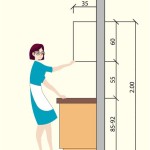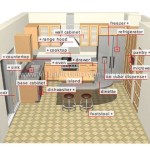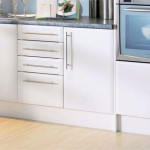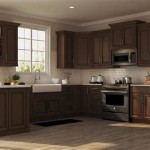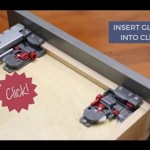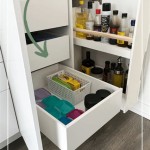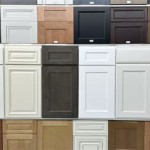Understanding Kitchen Cabinet Drawer Glides
Kitchen cabinet drawer glides, often overlooked, are crucial components that significantly influence the functionality and longevity of kitchen cabinetry. Their smooth operation can transform a kitchen from a source of frustration into a space of efficiency and enjoyment. Selecting the appropriate drawer glides requires understanding the various types available, their load capacities, materials, and installation processes. A well-informed choice ensures that drawers operate smoothly, quietly, and reliably for years to come.
This article provides a comprehensive overview of kitchen cabinet drawer glides, exploring the different types, their functionalities, and factors to consider when selecting the optimal glides for specific kitchen cabinet applications. It aims to equip readers with the knowledge necessary to make informed decisions, ensuring both performance and durability.
Types of Kitchen Cabinet Drawer Glides
The market offers a wide variety of drawer glides, each designed with specific features and benefits. Understanding these differences is essential for selecting the most appropriate glide for a particular application. The primary types of drawer glides include roller slides, ball-bearing slides, and soft-close slides, each offering varying degrees of load capacity, durability, and functionality.
Roller Slides: Roller slides are the most basic and typically the least expensive type of drawer glide. They consist of two rollers, one attached to the drawer and the other to the cabinet frame. The drawer slides in and out as the rollers move along plastic or metal tracks. While roller slides are relatively easy to install and suitable for light-duty applications, they generally have lower load capacities compared to other types of glides. They also tend to be noisier and less smooth in operation. Roller slides are typically used in utility drawers or applications where budget is a primary concern.
Ball-Bearing Slides: Ball-bearing slides offer superior performance compared to roller slides. They utilize small ball bearings encased within metal tracks to facilitate smooth and quiet drawer movement. These slides are available in various load capacities, making them suitable for a wide range of applications, from light-duty utensil drawers to heavy-duty pot and pan drawers. Ball-bearing slides are generally more durable and longer-lasting than roller slides, providing a smoother and more reliable operation. They often come with features such as full-extension capabilities, allowing users to access the entire contents of the drawer.
Soft-Close Slides: Soft-close slides are a specialized type of ball-bearing slide that incorporates a mechanism to gently and silently close the drawer. This feature prevents slamming and reduces wear and tear on the cabinet frame and drawer box. Soft-close slides are highly desirable in modern kitchens, providing a touch of luxury and enhancing the overall user experience. They are available in both side-mount and undermount configurations and are suitable for various drawer sizes and load capacities. The soft-close mechanism typically involves a hydraulic or pneumatic damper that slows the drawer’s momentum just before it closes completely.
Key Considerations When Choosing Drawer Glides
Selecting the right drawer glides involves careful consideration of several factors to ensure optimal performance, durability, and compatibility with the existing cabinetry. These factors include load capacity, extension type, mounting style, and material construction. Failing to consider these elements can lead to premature failure of the glides or unsatisfactory drawer operation.
Load Capacity: Load capacity refers to the maximum weight a drawer glide can safely support. It is crucial to select glides with a load capacity that exceeds the anticipated weight of the drawer and its contents. Overloading drawer glides can result in bending, binding, and eventual failure. Manufacturers typically specify the load capacity in pounds or kilograms. When estimating the load, it is essential to consider not only the weight of the items typically stored in the drawer but also the potential for heavier items being placed in the drawer in the future. For heavy-duty applications, such as drawers used for storing pots, pans, or appliances, heavy-duty ball-bearing slides with higher load capacities are recommended.
Extension Type: The extension type refers to how far the drawer extends out of the cabinet. Common extension types include ¾ extension, full extension, and over-travel extension. ¾ extension slides allow the drawer to extend approximately three-quarters of its length, leaving some of the contents at the back of the drawer inaccessible. Full-extension slides allow the drawer to extend completely out of the cabinet, providing full access to all contents. Over-travel extension slides extend the drawer slightly beyond the front of the cabinet, providing even greater visibility and accessibility. The choice of extension type depends on the user's preference and the specific needs of the application. Full-extension slides are generally preferred for drawers that require frequent access to all contents, while ¾ extension slides may be sufficient for drawers used for less frequently accessed items.
Mounting Style: Drawer glides are available in various mounting styles, including side-mount, undermount, and center-mount. Side-mount glides are attached to the sides of the drawer box and the cabinet frame. They are the most common and versatile type of drawer glide, suitable for a wide range of drawer sizes and configurations. Undermount glides are attached to the underside of the drawer box and the cabinet frame. They offer a cleaner, more streamlined appearance, as the glides are hidden from view. Undermount glides are often used in high-end cabinetry. Center-mount glides are attached to the center of the drawer box and the cabinet frame. They are typically used for smaller, lighter drawers and are less common than side-mount or undermount glides. The choice of mounting style depends on the desired aesthetic, the drawer construction, and the available space within the cabinet.
Material Construction: The material from which drawer glides are constructed significantly impacts their durability and longevity. Most drawer glides are made from steel, but the quality and thickness of the steel can vary. Higher-quality steel glides are more resistant to bending and corrosion, ensuring smoother and more reliable operation over time. Some drawer glides may also incorporate plastic or nylon components, such as rollers or bearings. The quality of these components can also affect the overall performance and lifespan of the glides. It is generally advisable to choose drawer glides made from high-quality steel with durable plastic or nylon components to ensure long-lasting performance.
Installation and Maintenance of Drawer Glides
Proper installation and regular maintenance are crucial for ensuring the smooth and reliable operation of kitchen cabinet drawer glides. Incorrect installation can lead to binding, misalignment, and premature failure. Similarly, neglecting maintenance can result in dirt and debris accumulating within the glides, causing friction and reduced performance. Following the manufacturer's instructions carefully during installation and implementing a simple maintenance routine can significantly extend the life of drawer glides.
Installation Process: The installation process typically involves attaching one part of the glide to the drawer box and the other part to the cabinet frame. It is essential to ensure that the glides are aligned correctly and securely fastened to both the drawer and the cabinet. Using the correct hardware, such as screws of the appropriate length and diameter, is crucial for preventing damage to the cabinet or drawer. Before installing the glides, it is advisable to measure and mark the precise locations where the glides will be attached. Using a level can help ensure that the glides are installed straight, preventing binding and misalignment. For side-mount glides, it is important to leave a small gap between the drawer box and the cabinet frame to allow for smooth movement. For undermount glides, ensure proper engagement between the drawer and the glide mechanism.
Maintenance Procedures: Regular maintenance can help prevent problems and extend the lifespan of drawer glides. The primary maintenance task involves cleaning the glides periodically to remove dirt, dust, and debris. A simple brush or vacuum cleaner can be used to remove loose particles. For more stubborn dirt, a damp cloth can be used, followed by a dry cloth to prevent rust. Lubricating the glides with a silicone-based lubricant can further improve their performance. Avoid using oil-based lubricants, as they can attract dust and debris, leading to clogs. Inspecting the glides regularly for signs of wear or damage is also important. If any parts are worn or broken, they should be replaced promptly to prevent further damage. Tightening any loose screws can also help maintain the stability of the glides.
Understanding the different types of kitchen cabinet drawer glides, the key considerations for selecting the right glides, and the importance of proper installation and maintenance is essential for ensuring the smooth and reliable operation of kitchen drawers. By investing in high-quality glides and following recommended practices, homeowners can significantly enhance the functionality and longevity of their kitchen cabinetry.

The Complete Guide To Choosing Drawer Slides Cdnm Cabinet Doors N More

Learn How To Install Soft Close Drawer Slides Kitchen Storage Drawers

Drawer Slides Glides And Rails Hardware

Drawer Slides Glides And Rails Hardware

How To Install Cabinet Drawers With Ball Bearing Slides Houseful Of Handmade

How To Install Drawer Slides The Easy Way

How To Install Soft Close Drawer Slides Kitchen Cabinet Upgrades

Types Of Drawer Slides For Cabinets Sketchlist3d

Types Of Drawer Slides For Kitchen Washroom Bedrooms

Salice Hinges Runners And Sliding Systems For Furniture
Related Posts

